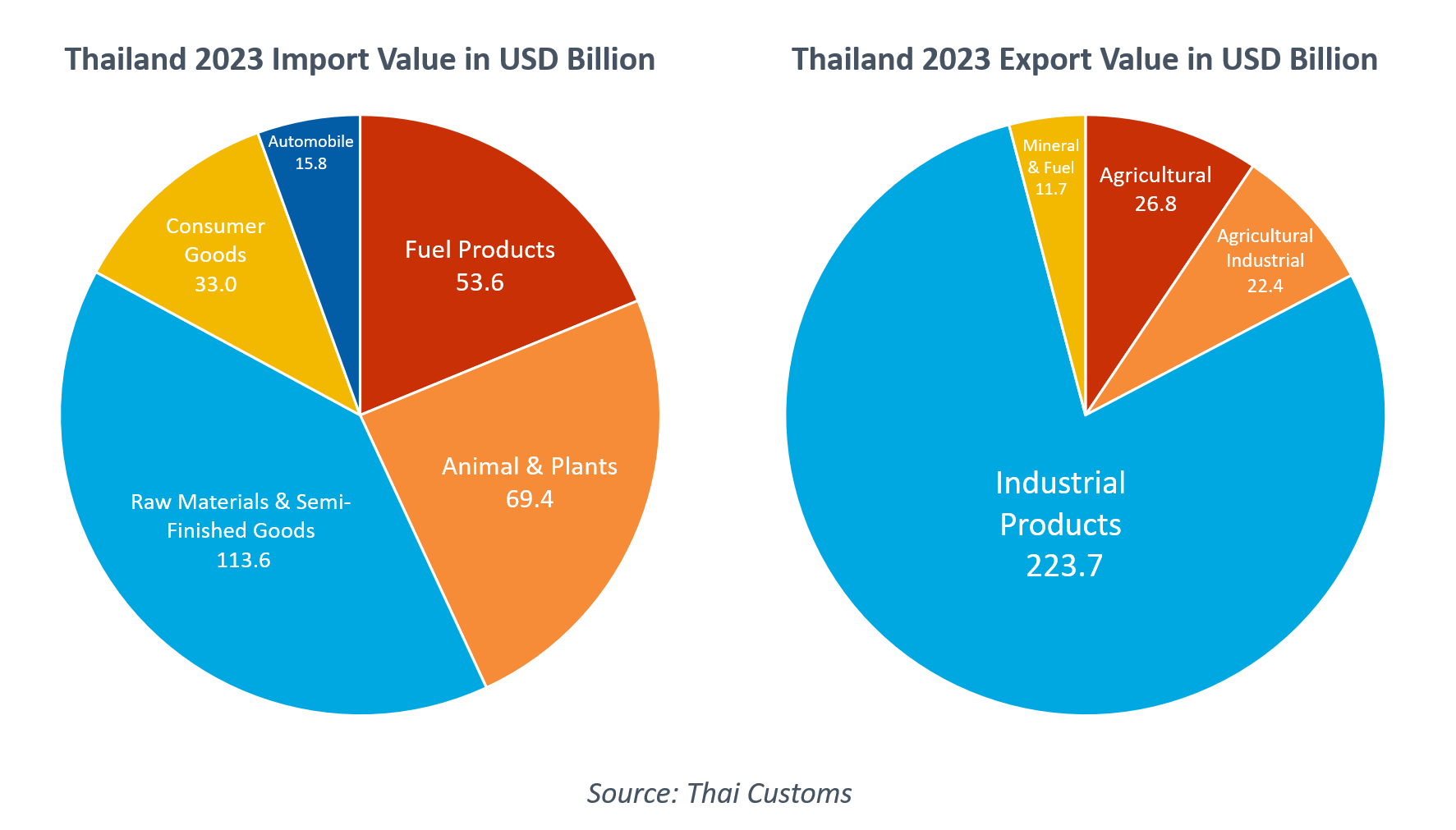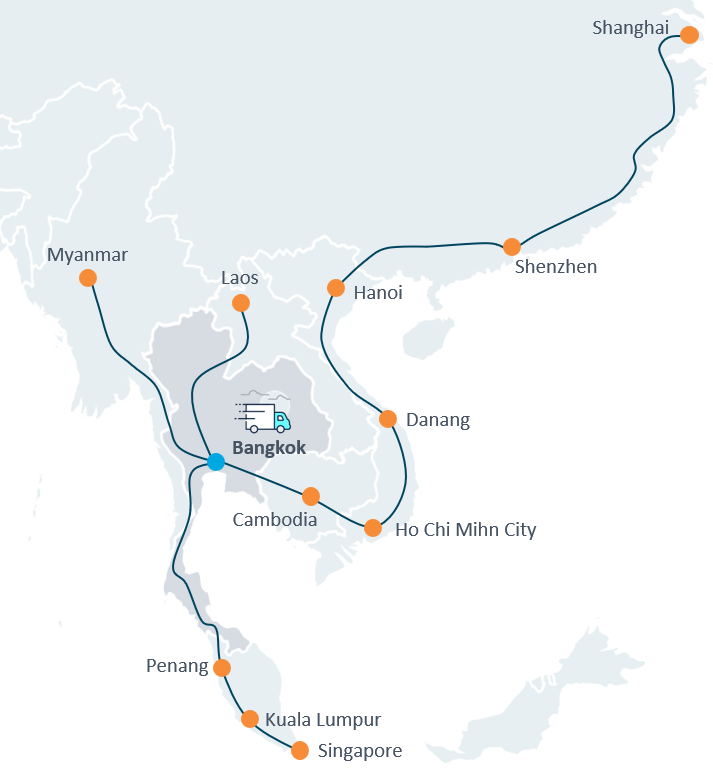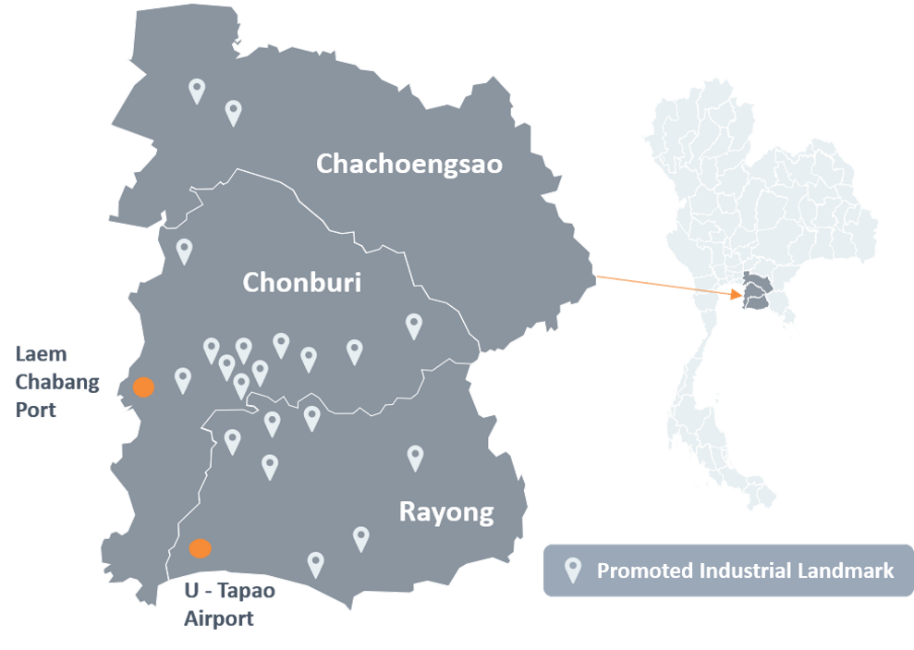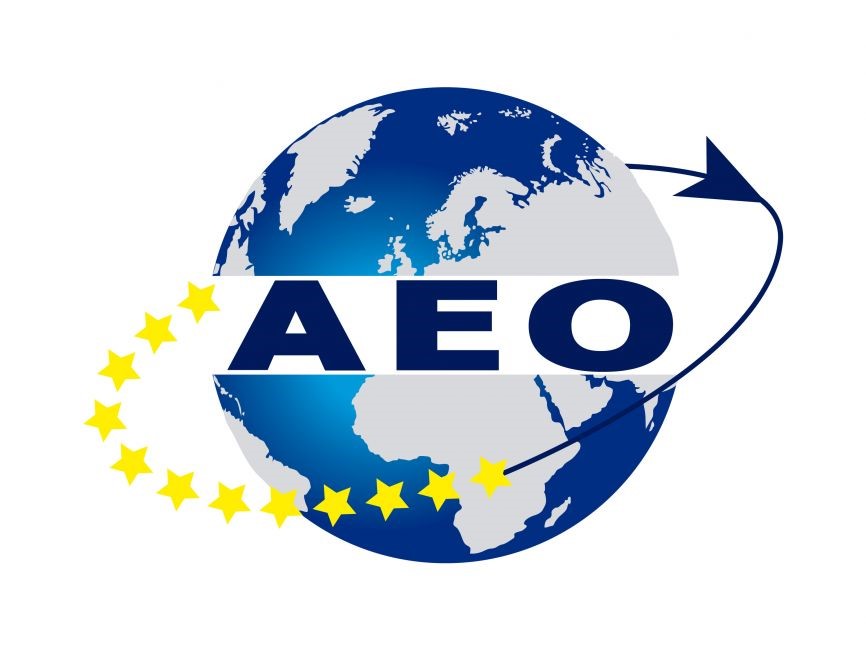Thailand has one of the fastest growing economies in Southeast Asia and its prominence as a manufacturing and logistics hub is growing. As a result, efficient shipping to Thailand has become critical to many logistics and supply chain professionals. This article explores some of the reasons for Thailand’s rise and offers practical advice on how to ship smarter and more efficiently to and from Thailand.
Thailand’s Global Trade
Thailand, having the second largest economy in the ASEAN region behind Indonesia, plays a crucial role in regional trade. In 2023, Thailand’s total trade value reached USD 289.75 billion in imports and USD 284.56 billion in exports. The country’s economic strength is powered by an extensive network of Free Trade Agreements (FTAs) with 18 countries. This broad range of trade agreements facilitates smooth international transactions, making shipping to Thailand a significant trade in Southeast Asia.

Location and Infrastructure
To support its thriving economy and its role in global trade, Thailand is rapidly developing its transportation and logistics infrastructure. As a kingdom of 77 provinces, Thailand has heavily invested in developing its road network to ensure the efficient movement of cargo across these vast areas. The national infrastructure development program has committed USD 25.2 billion to 36 projects, including upgrades to rail and road networks, public transport improvements, and expansions of airports and seaports.
 Shipping to Thailand benefits greatly from the country’s central location in Southeast Asia, making it an ideal hub for intra-Asia shipments. One of Thailand’s strengths is cross-border road freight, allowing for easy land transport to neighboring countries such as Vietnam, Malaysia, and Singapore. Additionally, road freight from Thailand can reach Southern China, including major cities like Shenzhen, and extend as far as Shanghai, Kunshan, and Suzhou. This strategic position enhances Thailand’s role in regional trade, offering efficient and cost-effective logistics solutions for businesses looking to expand their market reach within Asia. The connectivity enhances its appeal as a key logistics and distribution center in the region.
Shipping to Thailand benefits greatly from the country’s central location in Southeast Asia, making it an ideal hub for intra-Asia shipments. One of Thailand’s strengths is cross-border road freight, allowing for easy land transport to neighboring countries such as Vietnam, Malaysia, and Singapore. Additionally, road freight from Thailand can reach Southern China, including major cities like Shenzhen, and extend as far as Shanghai, Kunshan, and Suzhou. This strategic position enhances Thailand’s role in regional trade, offering efficient and cost-effective logistics solutions for businesses looking to expand their market reach within Asia. The connectivity enhances its appeal as a key logistics and distribution center in the region.
Thailand 4.0
Shipping to Thailand is becoming increasingly important as the country emerges as a top choice for the China + 1 strategy, with many manufacturers relocating some of their operations out of China. To attract these manufacturers, the Thai government has introduced various incentives, such as tax breaks and simplified regulations. This initiative is part of the Thailand 4.0 strategy.
 At the core of Thailand’s 4.0 strategy is the Eastern Economic Corridor (EEC), a special economic zone in Eastern Thailand designed to become a hub for high-tech companies and innovation. This plan includes several initiatives aimed at improving infrastructure, attracting investment, and developing talent. This area spans three eastern provinces: Rayong, Chonburi, and Chachoengsao, covering an area of around 13,000 square kilometers. Learn more about the Thailand 4.0 Strategy.
At the core of Thailand’s 4.0 strategy is the Eastern Economic Corridor (EEC), a special economic zone in Eastern Thailand designed to become a hub for high-tech companies and innovation. This plan includes several initiatives aimed at improving infrastructure, attracting investment, and developing talent. This area spans three eastern provinces: Rayong, Chonburi, and Chachoengsao, covering an area of around 13,000 square kilometers. Learn more about the Thailand 4.0 Strategy.
Another industry critical to Thailand’s 4.0 strategy is electric vehicle production. EV supply chains are vastly different from traditional automotive supply chains. Many of tomorrow’s cars will be made in Asia and the chips and batteries so central to EVs will come from Asia, as well. As a result, OEMs and suppliers will need to establish operations in emerging markets for EV production, like India and Thailand. This will require companies to quickly adapt to new warehousing, shipping and regulatory requirements, as well as a new language and culture. It helps to have a logistics partner, like Dimerco, that understands this industry and has a strong logistics infrastructure and know-how in Thailand and other parts of Asia. We talk about this evolution in our eBook: The EV Supply Chain Challenge.
Key Considerations when Shipping to Thailand
Navigating Thailand shipments requires careful consideration:
 Location
Location
Thailand is a kingdom consisting of 77 provinces, making port proximity a crucial consideration when shipping to Thailand. The key seaports and airports are strategically located across the country, ensuring efficient connectivity for both domestic and international logistics. Major seaports include Laem Chabang and the Port of Bangkok. For airports, Suvarnabhumi Airport in Bangkok is the main international gateway, handling a significant volume of cargo and passenger traffic.

Commodity
Consider the nature of your cargo – it heavily influences your choice between air and ocean freight when shipping to Thailand. High-value items typically require air freight services, while lower-value goods are better suited for ocean freight. In Thailand, air freight is commonly used for semiconductors, e-commerce, fruits, and other perishable cargo. For ocean freight, textiles, automobile parts, and heavy-weight cargo are the common commodities being shipped out.
Time
The time sensitivity of your cargo is another crucial factor in selecting the appropriate mode of transportation. Air freight guarantees swift delivery. In contrast, ocean freight provides a more cost-effective alternative, with longer transit times. If you need somewhere in the middle, cross border road freight can also be a cost-effective alternative if you are shipping within the region.
Cost
Understanding the cost disparity between air and ocean freight when shipping to Thailand is essential. The price of your freight depends on both the nature of your cargo and the urgency of delivery. Air freight cost tends to be premium making it suitable for urgent or high-value cargo. Conversely, ocean freight offers a more economical option for lower-value goods, unless expedited delivery is required. Learn how to reduce air freight cost form our eBook: How to Reduce International Air Freight Costs

Local Customs Compliance
 Understanding local customs compliance is crucial for ensuring smooth shipment arrangements in Thailand. Partnering with an Authorized Economic Operator (AEO) certified logistics provider is highly recommended. Shippers working with an AEO-certified partner benefit from reduced inspections and faster processing times. Dimerco Thailand is among the few logistics providers that hold this certification.
Understanding local customs compliance is crucial for ensuring smooth shipment arrangements in Thailand. Partnering with an Authorized Economic Operator (AEO) certified logistics provider is highly recommended. Shippers working with an AEO-certified partner benefit from reduced inspections and faster processing times. Dimerco Thailand is among the few logistics providers that hold this certification.
Monsoon Season
The monsoon season in Thailand, which brings heavy rainfall, lasts from end of May to October. During this time, it’s important to strengthen the packaging of your cargo when shipping to Thailand, especially for high-value and sensitive items. Good packaging can protect your shipments from water damage, ensuring they arrive in great condition. Consider using waterproof wrapping, sturdy outer layers, and secure sealing to keep your goods safe during transit. Taking these precautions is essential for maintaining the integrity and safety of your cargo in the challenging weather conditions of the monsoon season. This is one of the key points covered in our eBook: Streamlining Global Logistics for Electronics Products.
Shipping to Thailand
As Thailand’s prominence in global trade grows, understanding the nuances of shipping to Thailand becomes increasingly important. By considering key factors, you can streamline your shipping process, manage costs effectively, and ensure your goods move in and out of Thailand smoothly. Do you need a reliable logistics and freight forwarding company in Thailand? Contact Dimerco today to start a discussion.
